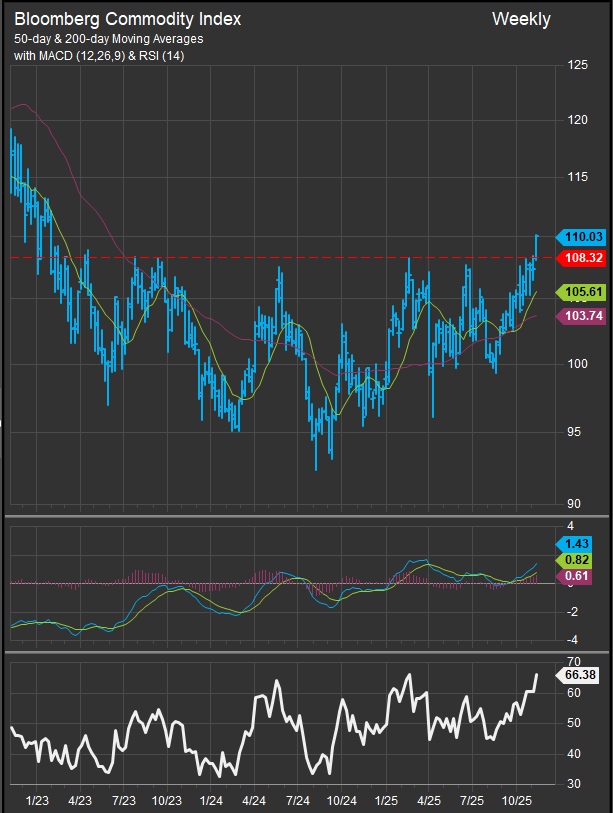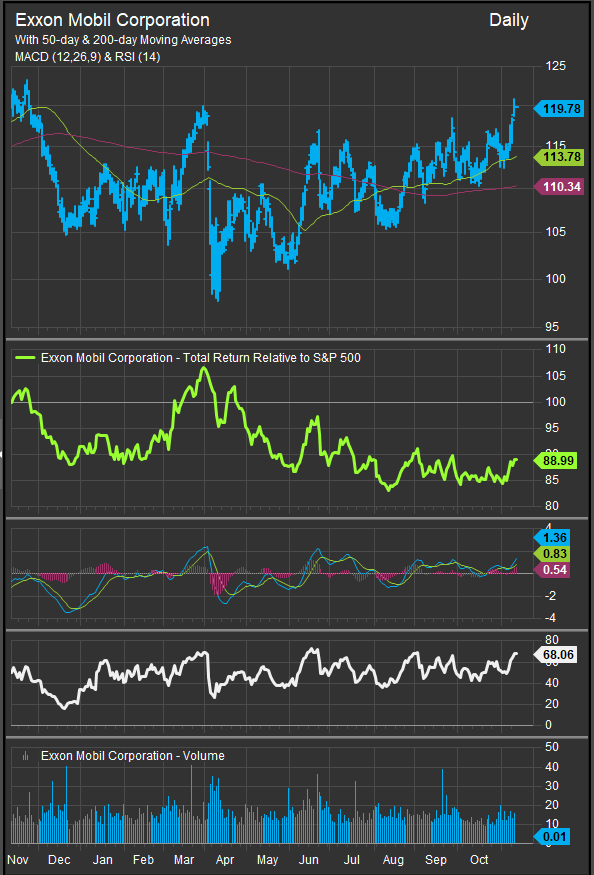November 12, 2025
Commodity markets have surged to multi-year highs in the near-term, signaling a broad-based reflation across the raw-materials complex. The Bloomberg Commodity Index (BCOM) is up roughly 9% year-to-date and gained more than 4% in the third quarter, reflecting strength across metals and precious commodities even as energy and agricultural segments remain mixed. Four of the six major sectors within the index advanced, with industrial and precious metals leading the way. This resurgence underscores how a combination of structural supply constraints, resilient demand, and macro tailwinds are converging to extend what may be a new phase in the commodity cycle.

Why Commodities Are Rising
Three major forces are propelling the rally.
First, global demand remains resilient despite a complex macro environment. Consumption of industrial metals, critical minerals, and energy transition materials continues to rise, while demand for precious metals has strengthened on inflation and geopolitical hedging.
Second, supply-side constraints are tightening. Years of underinvestment in mining, refining, and exploration have left many markets undersupplied, particularly copper, lithium, and nickel. With capex still below pre-pandemic levels, supply remains slow to respond even as inventories are depleted.
Third, policy and macro dynamics are amplifying the move. A softer U.S. dollar, persistent inflation concerns, and renewed investor interest in real assets have increased allocations to commodity ETFs and futures. This influx of capital, combined with an improving global growth backdrop, has given raw materials an additional boost.
Together, these drivers have pushed commodities into an upswing that looks less like a short-term rally and more like the early stages of a structural repricing in global resource markets.
Sectors and Stocks Poised to Benefit
If commodity prices remain elevated—or continue to climb—the impact will ripple across several key equity segments.
Energy Producers
Integrated oil and gas majors and upstream producers are among the first beneficiaries. Firms such as Exxon Mobil (XOM) and Chevron (CVX) enjoy direct leverage to crude-price trends, while higher natural-gas and refining spreads can lift cash generation across the sector.

Base & Industrial Metals / Mining
Rising demand for electrification and infrastructure metals positions miners favorably. Freeport-McMoRan (FCX), Rio Tinto (RIO), and Teck Resources (TECK) stand out for their copper, aluminum, and zinc exposure. As capital discipline remains tight, higher commodity prices flow directly into free-cash-flow growth and shareholder returns.
Precious Metals and Streaming Firms
Gold and silver producers have rebounded as investors seek inflation hedges and portfolio diversifiers. Wheaton Precious Metals (WPM) and Franco-Nevada (FNV)—streaming and royalty companies with low operating leverage—offer exposure to rising metals prices with less cost volatility than miners.

Commodity ETFs and Broader Exposure
For diversified exposure, ETFs such as the SPDR S&P Metals & Mining ETF (XME) and the Global X Copper Miners ETF (COPX) provide portfolio-level participation in the metals rally. Both funds have seen increased inflows as investors position for an extended commodity cycle.

Services and Equipment Providers
When commodity prices rise, capex cycles typically follow. Oil-field service firms, mining-equipment manufacturers, and logistics providers tend to benefit from increased exploration, maintenance, and transport activity—companies such as Caterpillar (CAT) and Schlumberger (SLB) exemplify this secondary wave of beneficiaries.

Investment and Portfolio Implications
While the case for commodity exposure has strengthened, investors should approach it with selectivity. Producer equities are inherently volatile and sensitive to both price swings and policy shifts. Cost inflation—particularly energy and labor—can erode some of the benefits of higher prices. Moreover, if commodities rise too quickly, demand destruction could set in, especially in energy and industrial inputs.
Still, for diversified portfolios heavily weighted toward growth or technology, selective exposure to resource producers can provide both inflation protection and real-asset diversification. Investors should focus on firms with strong balance sheets, disciplined capital allocation, and direct exposure to structurally tight markets such as copper, gold, and liquefied natural gas.
In short, while the Bloomberg Commodity Index’s climb to multi-year highs may invite caution, it also marks a renewed phase of opportunity for resource equities. The early innings of this rally appear rooted not in speculation but in real-economy fundamentals—and if those fundamentals persist, the winners will likely include the world’s most efficient producers of energy, metals, and materials.
At ETFSector.com our Elev8 Portfolio entered November underweight direct commodities exposure. The upside break-out to commodities is a tailwind to the Energy Sector and Materials Sector in our work as both have historically outperformed when commodities prices rise over longer periods of time. We are likely to add more commodities exposure on our next month-end rebalance. For those who actively manage or have tactical rebalancing methodologies we would recommend adding some exposure in the near-term.
Sources
- Bloomberg Professional, “Commodities Outperform in 2025: Will the Tailwinds Continue?” November 2025.
- PIMCO, “After the Gold Rush: The Strategic Role of Commodities in Portfolios.”
- Financial Times, “Mining Sector Faces Investment Shortfall Amid Global Supply Constraints.”
- MarketWatch, “Commodity ETFs See Surge in Inflows as Prices Hit Multi-Year Highs.”
- Company filings and FactSet data through November 2025.
Additional charts and data sourced from FactSet Research Systems Inc.
